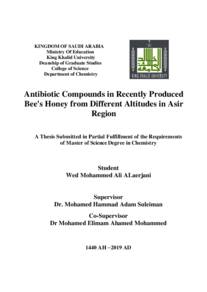Novel Bifunctional Catalyst for Biomass-Derived MIBK Conversion
Abstract Using biomass to produce chemicals, fuels and fuel additives is considered an attractive alternative to fossil resources (oil and natural gas). However, selectivity in biomass conversions is challenging because there is a considerable amount of chemicals produced as undesired side products such as the production of 30% acetone as a byproduct in the bio-butanol manufacturing. These byproducts generate waste, which shall be eliminated because they reduce the economic value of the overall process. The conversion of acetone to methyl isobutyl ketone (MIBK) is a smart solution to increase the economic value of the byproduct compounds. MIBK is one of the important building blocks, it can be converted to several compounds with a high industrial importance such as 2-methylpentanol (MP-ol) and 2- methylpentane (MP), which can be used as fuel additives. The hydrogenation of MIBK to MP-ol and MP has been reported recently through gas phase reaction at relative high temperature and pressure. The aim of the current research is to design an efficient bifunctional catalyst for the liquid phase conversion of MIBK under mild condition. Therefore, two groups of catalysts were prepared: In the first group, one-step hydrothermal synthesis procedure was applied to prepare nanoparticles of metal centers (e.g. Ru, Pd, Pt or Ag) supported on acidic Al-TUD-1. TUD-1 (the abbreviations of Technische Universiteit Delft) is a mesoporous silica with a very high surface area i.e. >700 m2/g. While, in the second group, an impregnation method was applied to prepare nanoparticles of metal centers (e.g. Ru, Pd, Pt or Ag) supported on acidic cesium salt of phosphotungstic acid, Cs2.5H0.5PW12O40 (CsPW). CsPW have a relatively high surface area (75-111 m2 g-1) and strong Brønsted acidity.k The prepared samples were characterized by XRD, N2 physisorption, TGA, IR and HR-TEM. Characterization data confirmed the presence of nanoparticles of the desired metals with an average particle size of 5-10 nm supported on the acidic silica matrix. The solvent-free liquid phase hydrogenation of MIBK was carried out in a semi-batch Parr reactor, at 170 C and 10 atm of H2. The catalytic activity of Pt-Al-TUD-1 is superior to the other M-AlTUD-1, with 13% conversion of MIBK and 99% selectivity towards 2-MP after 4h. While the catalytic activity of Pd-CsPW benchmarked the other M-CsPW, where 10% conversion of MIBK was obtained with 91% selectivity
